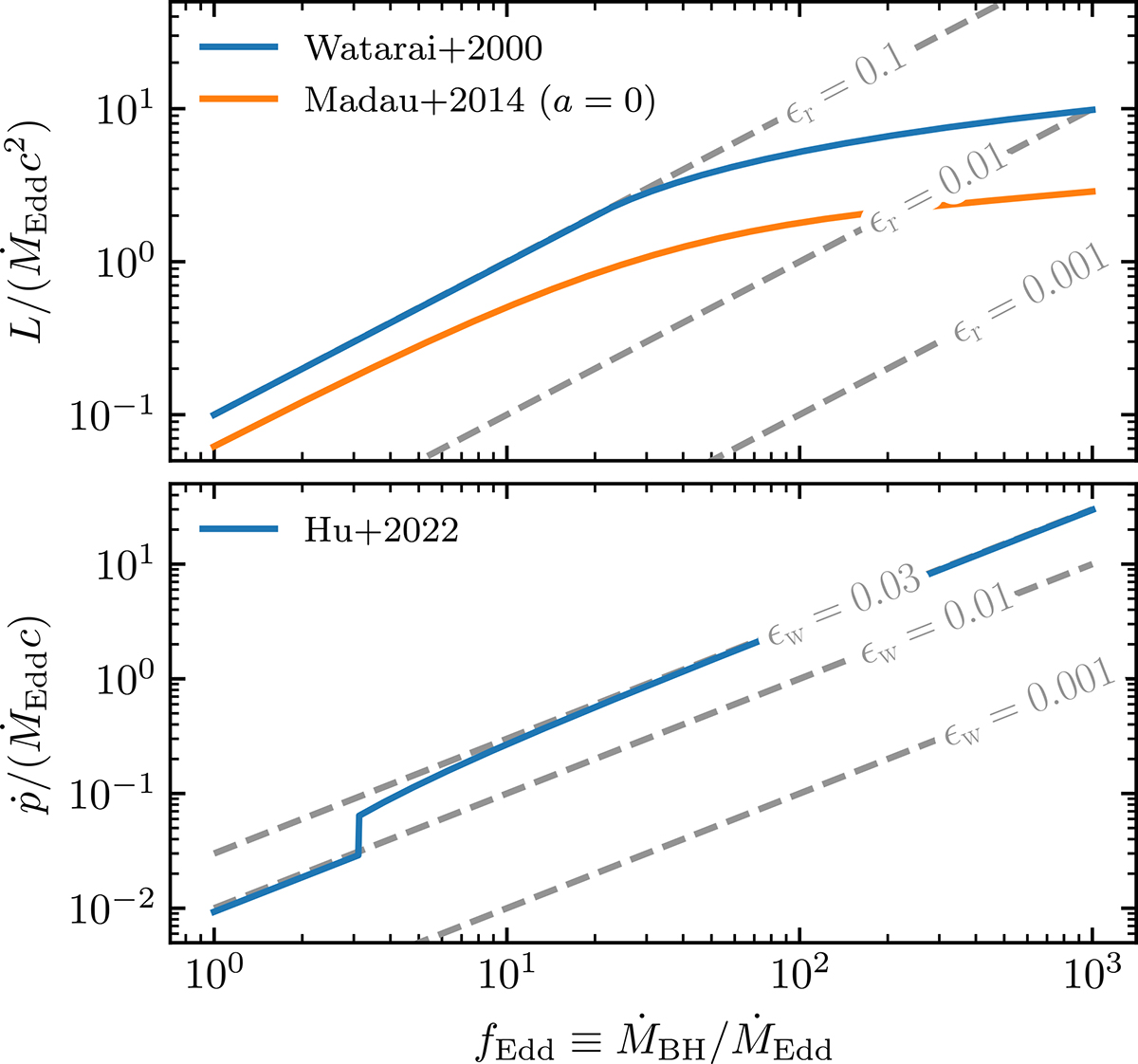Fig. 2.

Download original image
Subgrid models for radiative feedback (top panel) and mechanical feedback (bottom two panels). Top: Energy- and momentum-ejection rates as a function of accretion rates, including “log-form” models inferred from the slim disk (solid), and simple ones with constant ![]() (dashed). Bottom: Momentum-ejection rates for mechanical feedback with constant
(dashed). Bottom: Momentum-ejection rates for mechanical feedback with constant ![]() (dashed), and the model in Hu et al. (2022) – though the released kinetic energy is almost constant (
(dashed), and the model in Hu et al. (2022) – though the released kinetic energy is almost constant (![]() ), the momentum-injection rate grows linearly (
), the momentum-injection rate grows linearly (![]() ) because of the variable mass-loading factor.
) because of the variable mass-loading factor.
Current usage metrics show cumulative count of Article Views (full-text article views including HTML views, PDF and ePub downloads, according to the available data) and Abstracts Views on Vision4Press platform.
Data correspond to usage on the plateform after 2015. The current usage metrics is available 48-96 hours after online publication and is updated daily on week days.
Initial download of the metrics may take a while.


